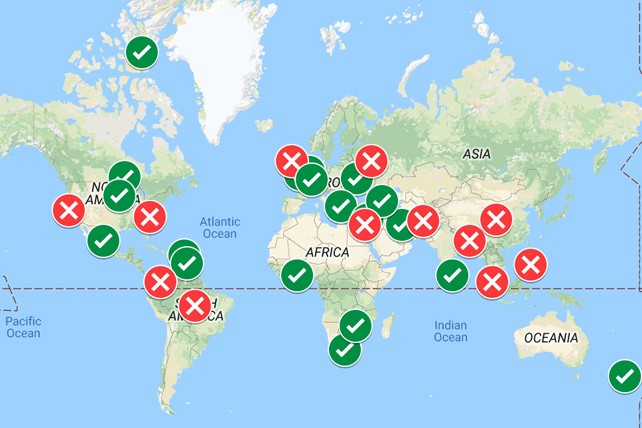The COVID-19 pandemic has pushed prisons across the world to reckon with long-standing issues of overcrowding, poor health care, and the lack of re-entry services. According to the World Health Organization, prison overcrowding is a critical problem that can contribute to the spread of COVID-19. It is virtually impossible to self-isolate in prison or to comply with the many of the other health guidelines surrounding COVID-19 prevention, including regular washing of hands. Prisons and jails are also typically severely under-resourced in terms of health care provisions.
To try and minimise the potential spread of the virus in prisons, several governments implemented measures to decongest prisons and jails. These measures varied from the early release of prisoners to pardons, temporary releases, transition to home arrests, and release on parole/bail.
Harm Reduction International monitored COVID-19 diversion measures adopted across the globe between March and June 2020. We found that eligibility for release from prison was largely determined by age, health (for example, pre-existing medical conditions, or pregnancy), conduct in prison, length of sentence remaining, and type of offence (typically non-violent crimes).
People convicted of violent crimes, drug offences, terrorism, and political prisoners have largely been excluded from early release. These exclusions come with a host of ethical implications. Leaving certain groups of people in these high-risk environments solely based on the type of offence arguably leaves prison administrators accountable for preventable deaths.
We also found that in some jurisdictions, release from prison is contingent on having a permanent home address. This has been justified by the need for prison administrations to register detainees. However, this stipulation excludes a significant number of people in prison who do not have permanent housing in the community. It also ignores longstanding issues with the re-entry process, as illustrated by the stories of four people released from prison in Cyprus who were asked to return to the prisons they had been released from. Upon release, three of them had been unable to find employment (due to their criminal history) or permanent housing, and the fourth was a young person who was subsequently detained for their drug use. These experiences reflect a systemic failing to address some of the most critical issues that come with re-entry: lack of access to employment, housing, and now, re-entry into a world permanently changed by this pandemic.
Some prison administrations have done exceptionally well in responding to the crisis. Some of the best practices have been the release of thousands of prisoners that we have seen in places like Iran, Indonesia, and Myanmar. However, these policy responses have fallen short of expectations. The release in Iran was temporary, and we are now seeing a recall of prisoners to confinement. In Indonesia and Myanmar, the criteria for release are unclear or somewhat arbitrary.
Many of these measures have been met with public pushback, with specific regard to prisoners convicted of violent and drug offences, often driven by stigmatised notions of who should be eligible for release under these horrific conditions.
For the people who remain inside prison, there have been some significant changes , including the suspension of visits in prisons and court proceedings. Many countries have pivoted to the use of videoconferencing technology to resume family visits and remote hearings. The use of this technology can be a huge step forward for prisoners who may be suffering from heightened mental health issues resulting from increased isolation since COVID-19 hit. However, technology has also been used to continue to pursue draconian sentences. One man in Singapore recently received the city’s first death sentence via Zoom, for his alleged involvement in drug trafficking of 28.5 grams of heroin.
There are several opportunities for policy reform which will have a tangible impact. States should first consider a temporary moratorium on the intake of new admissions into prisons and jails (including for offences related to COVID-19, such as non-compliance with lockdown rules). States should also ensure that type of offence is not the sole criteria for release, and consider the pre-existing health conditions that make people more vulnerable to COVID-19. And finally, prison officials must coordinate mass testing within prisons to accurately gauge the rates of infection and transmission. Without these rates, prisons and state governments are operating blindly and cannot appropriately assess the level of risk, rendering them unable to combat the crisis behind bars and leaving millions of people in prison vulnerable to a fatal virus.
* Meron Fikru is a recent graduate with her MSc in Criminal Justice Policy from the London School of Economics. She also holds a BA in Law, Societies, and Justice from the University of Washington. She has a keen interest in drug policy and criminal justice research, having studied drug policy in the Netherlands and the UK. She is also a strong advocate for prison reform, having participated in a mixed criminal justice course at a men's prison in Washington state.


